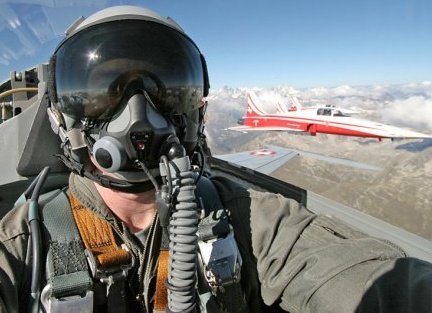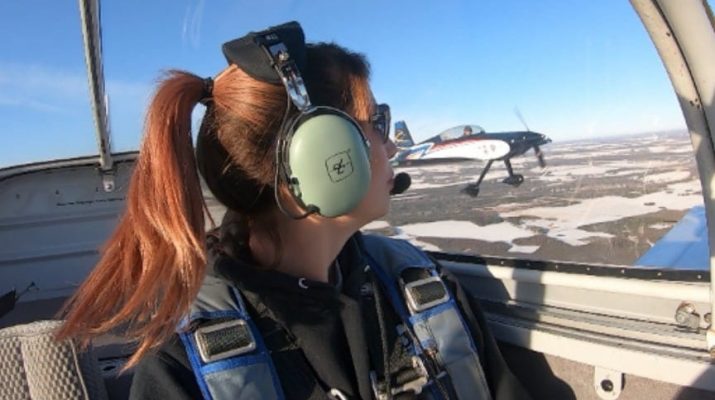How to stay ahead of the aircraft whether you are travelling at 100 or 500 knots.
Humans weren’t designed to travel at 150kts. That’s fast for most Piper Cub pilots, even with a tailwind. Humans definitely weren’t built to fly at 500kts either, but then, who actually believes that Super Hornet pilots are mere mortals….

Flying isn’t *that* different to driving…
Driving at only 60mph / 100kph on the highway, things do happen pretty fast. But we have lines to guide us, and signs to warn us of our impending exit road. We can also stop, ask directions or read a map! The GPS even gives us a ‘heads up’ and it doesn’t take much advance thinking to successfully make it to our destination.
Even though our aircraft tend to have GPS as well, we still have to keep thinking ahead of the aircraft. We can rarely stop and ask directions… Whilst this applies to all aspects of flight, I tend to notice this is forgotten about in the cruise, and in the circuit.
During navigation in the cruise, it’s very easy to either switch off and relax (flying along “fat, dumb and happy”), or even become obsessed with map reading and system monitoring.
Using the “What’s the Next Event?” Question, you can identify an upcoming land feature, or fifteen minute systems check, or even a Top of Descent point. Realise at what time this is expected, and then simply enjoy flying the aircraft accurately, observing the scenery, and looking out for other aircraft etc. Then at the right time, carry out the “Next Event”, and then identify your subsequent one.
For example: you’ve identified your Top of Descent point as 30 miles before the airfield. Calculate your ETA for the TOD, and then ask “what do I need to do before that Next Event?”. Chances are you might like to listen to the ATIS, and complete your Pre-Descent Checks, and then punch out a radio call (often Abbreviated as the ABC’s or AABBCC’s).
Allow yourself a few minutes to get all of that done, and then mark on your map or notepad the time you should initiate this. Then continue to simply fly and enjoy life, knowing that you have a plan, and consider what you might like to eat for dinner that night.
I’ve made this sound more complicated than it is – however removing that nagging thought of “I need to descend sooooon, plus do some other stuff sooner…and find out the weather at the airfield so I can prepare myself… oh no I’ve lost 200 feet…” is an anxiety inducing way to fly.
Similarly in the circuit, thinking about “Next Event” is the way to stay ahead of the aircraft, and arrive at certain positions prepared in the right configuration and speeds, so that you can fly better and lookout for other aircraft. It’s easy to simply fly downwind and look at the wind sock and find yourself ready to turn base but then find yourself 20kts over the limiting flap speed. Whereas if you break the circuit down and think ahead then “What’s Next” points may be “passing abeam far threshold – Downwind Checks”, “Mid Downwind – check spacing and wind”, “Abeam Threshold – next Event is turning Base at 90kts so I’ll reduce power Now…”
There is nothing more frightening than holding the angry tiger by the tail – or flying your aircraft also by just ‘hanging on’, so thinking about “What’s Next?” and then “What do I need to Achieve before then?” is a much better way to enjoy your flight!
What do you do to stay ahead of your aircraft?



I learned about rudder pedals after 200 hours of flying Cessnas when I rewarded myself by purchasing a Piper Cub for enjoyment. You know that plane won’t turn if you don’t use rudders? No it just keeps on going in the same direction at an angle of bank. The rudders actually make it turn! Really weird…but then I really looked at what rudders do. You not only learn to appreciate what they are for but how much aircraft design methodology has advanced over the years. No frise-differential ailerons neither! The Cub was a great “Wow!, there’s something I don’t know” about flying and gave me a solid grounding in the basics of aerodynamics! All while making me a better pilot. Great article!
Hi Jorgo, thanks for your good perspective. Would you mind replacing your top photo of the turbine converted DC-3? That is a photo of a person I knew and aircraft Iworked did avionics work on and that crashed just after rotation a few years back in Ohio that killed him and another pilot. I might be a bit sensitive, but the aircraft did get ahead of my acquaintance that day during an engine failure in a no win situation. Thanks mate.
Sure Ben thing – my condolences mate.